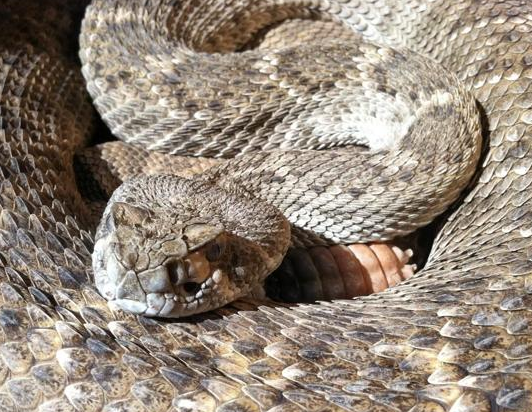North America is home to dozens of venomous snakes, everything from the small and elusive coral snake in the southern portion of the country, to the much larger timber and diamondback rattlesnakes. But that doesn’t mean you should avoid hunting in snake country. Some of the best hunting grounds for deer, elk, bear, turkey, wild boar, pronghorn, big horn sheep, moose, and other game takes place in areas where poisonous snakes are not just present, but common. If you’ve hunted for any length of time, you’ve no doubt at least seen a snake or two from a distance. Thankfully snake bites are not something that occus every day, but a bite from a venomous species can cause extensive damage and, in some cases, even death. Knowing how to avoid and treat a venomous snake bite is a crucial skill for any hunter.
treat a venomous snake bite is a crucial skill for any hunter.
Know Something About Snake Habitat and Habits So You Can Avoid Them
A critical first step toward staying safe in areas where poisonous snakes are found is to have a basic understanding of snake ecology. As exothermic animals, snakes must regulate their own body temperature. If it’s cool they will likely seek out a place where the sun’s rays will warm their bodies—on roads, rocks, stone paths, etc. In hot weather, snakes will find spots that are cooler, such as under a fallen log or in a rock pile. Avoid common snake hideouts like deadfalls, tall grass and brush, and rock slides. When you are in the woods, be sure to step on and then over fallen logs and large rocks, and never reach into areas that don’t offer enough visibility to see a snake. The key is to train yourself to recognize potential snake hazards and to avoid them. Most snake bites occur on the hands, lower legs, and feet when someone inadvertently gets too close to an unseen snake. Watch where you sit. It’s true that snakes are most active in the early mornings during the summer months, but snake bites can happen year-round. Stretches of warm weather at any point during the year bring these reptiles out of hiding. Chilly weather often makes snakes more lethargic, but they could be on the move because they are seeking shelter from an imminent cold front. A lesser known fact is that rattlesnakes can only bite from a coiled position. And not all rattlesnakes actually rattle a warning before striking.
Don’t Antagonize Snakes
This should be common sense, but a number of snake bites each year occur because people intentionally put themselves in a position to be bitten. Emergency room doctors report that the most common snake bite victim is male, between the ages of 18 and 35, and the most common place they are bitten is the area between the thumb and forefinger. Usually, there is alcohol involved. Obviously you won’t be drinking if you are hunting, but you get the idea. It’s not a good idea to try and kill a snake you see in the distance. It’s not a good trophy. Snakes are fascinating creatures and you might want to get a closer look out of curiosity, but they deserve a wide berth. When you spot a snake – stop and take a few steps back.
Have the Right Equipment
The most obvious piece of gear you’ll need for hunting in snake country is a pair of snake-proof gaiters or snake-proof boots. In rocky terrain it’s a good idea to have a shooting stick to help you navigate through rough terrain. Sticks accomplish two things. First, they help keep you from falling down into a rock slide or brush pile that may contain a snake, and second, they allow you to stabilize yourself without exposing your hands or legs. Carry a good flashlight in snake country. Communication is key, so if you don’t have a cell phone that works, carry a radio or satellite phone—something that allows you to call for help if you are bitten (or for any other emergency).
Know What to Do if You’re Bitten by a Snake
Avoiding snakes is the best option, but if you are bitten you need to know how to react. The first step is to get away from the snake, making sure that you and others are out of harm’s way. If you can identify the species that may help, but don’t put yourself at additional risk to try and see or catch the snake. There are several myths about sucking venom from the wound, but that’s only Hollywood. Don’t “cut and suck” like in the movies! Prompt medical care is the only reliable option. Increased blood flow spreads venom more quickly, so the first step is to remain calm. Exert as little effort as possible to minimize heart rate and the spread of toxins within your body. Try to keep the bite site below the heart if possible and control breathing. Remove any jewelry like watches or rings because there will be swelling. Cover the bite with something clean, like gauze but don’t put too much pressure on the wound. Every snake bite should be treated as an envenomation (as opposed to a dry bite when the snake strikes but does not inject venom). Get to a doctor as quickly as possible!
Although it’s true that one errant step in snake country can turn a wilderness hunt into a life-threatening emergency, keep in mind that snakes are generally not aggressive unless threatened (by accidentally stepping on or near them) or if deliberately provoked. Given room, they will retreat. If you plan to be trekking through prime snake habitat this hunting season, use these tips to stay safer.